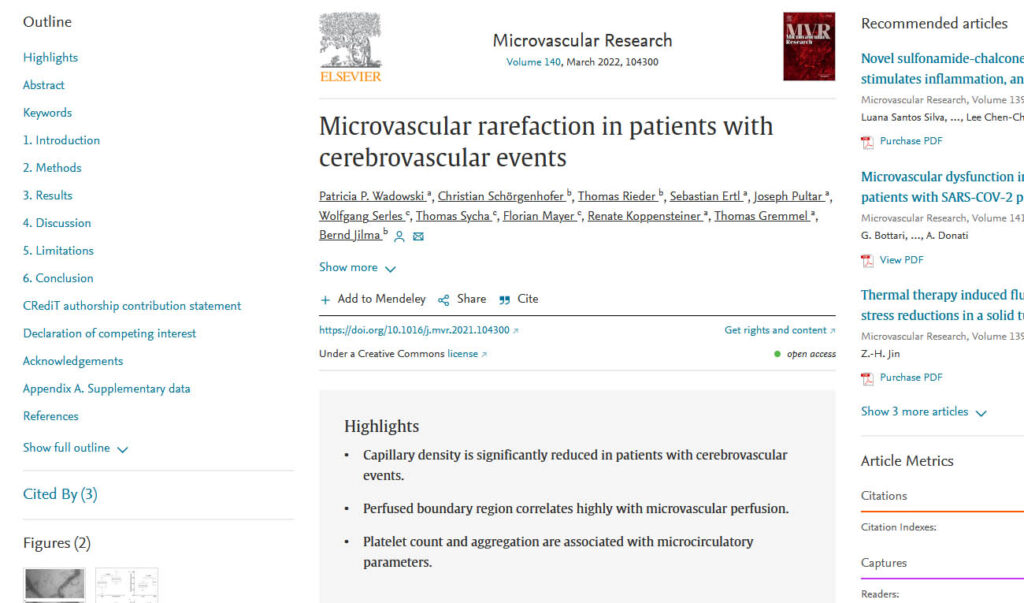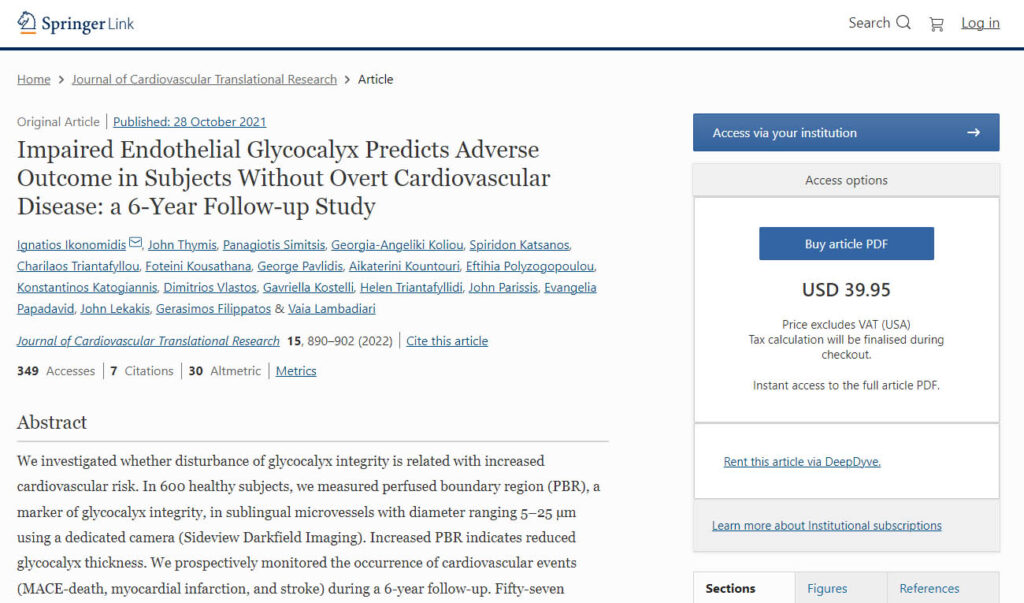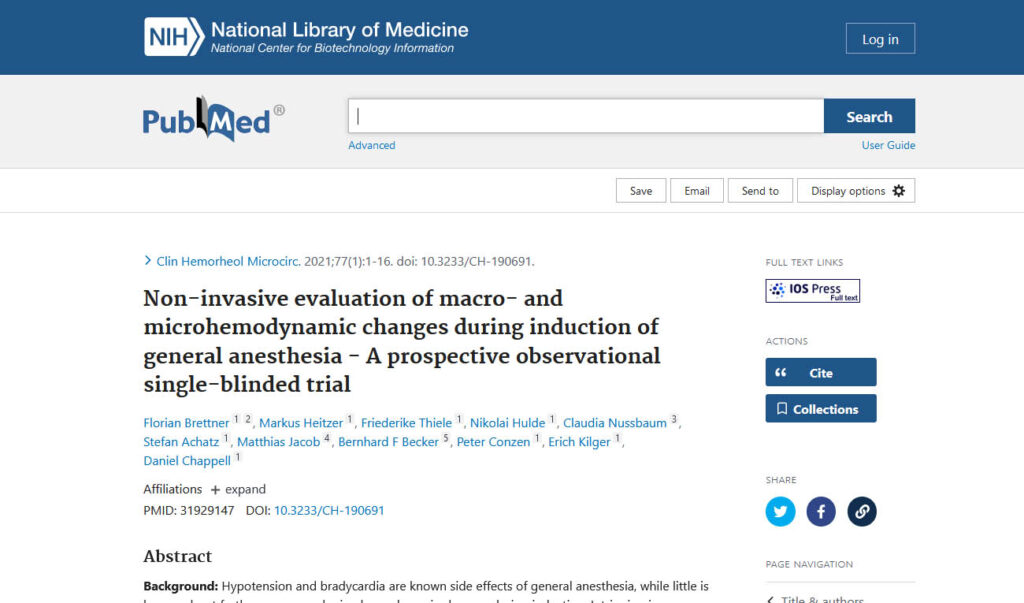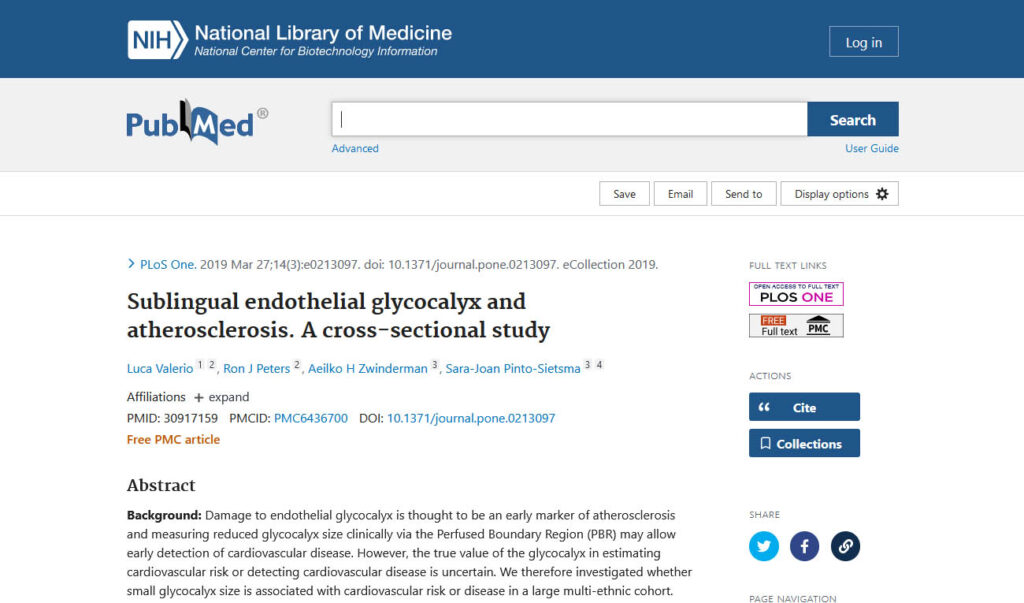Glycocheck - Stroke Studies
Post Count: 5

December 23, 2021
Microvascular rarefaction in patients with cerebrovascular events
Capillary density rarefaction and endothelial dysfunction contribute to chronic hypoperfusion and cerebral small vessel disease. Previous animal experiments revealed spatiotemporal microvascular remodeling directing post-stroke brain reorganization. We hypothesized that microcirculatory changes during acute cerebrovascular events could be reflected systemically and visualized sublingually.

October 28, 2021
Impaired Endothelial Glycocalyx Predicts Adverse Outcome in Subjects Without Overt Cardiovascular Disease: a 6-Year Follow-up Study
In 600 healthy subjects, we measured perfused boundary region (PBR), a marker of glycocalyx integrity, in sublingual microvessels with diameter ranging 5–25 µm using a dedicated camera (Sideview Darkfield Imaging).

February 12, 2021
Non-invasive evaluation of macro- and microhemodynamic changes during induction of general anesthesia – A prospective observational single-blinded trial
Hypotension and bradycardia are known side effects of general anesthesia, while little is known about further macro- and microhemodynamic changes during induction. Intriguing is furthermore, why some patients require no vasopressor medication to uphold mean arterial pressure, while others need vasopressor support.

August 17, 2019
Impaired Arterial Elastic Properties and Endothelial Glycocalyx in Patients with Embolic Stroke of Undetermined Source
Cardioembolism is a postulated mechanism of embolic stroke of undetermined source (ESUS). We investigated endothelial glycocalyx, aortic elastic properties, oxidative stress, and their association with left atrial (LA) function in ESUS and healthy individuals.

March 27, 2019
Sublingual endothelial glycocalyx and atherosclerosis. A cross-sectional study
Damage to endothelial glycocalyx is thought to be an early marker of atherosclerosis and measuring reduced glycocalyx size clinically via the Perfused Boundary Region (PBR) may allow early detection of cardiovascular disease.

